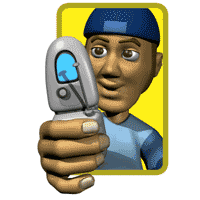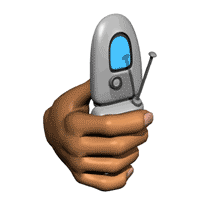


Nearly every modern cell phone (telefone celular) has a camera feature. Though they are far away from modern age digital camera, cell phone cameras can still be used to produce good quality photographs.
The cell phone (telefone celular) has some additional features that are not yet available on digital cameras and so may even be able to provide some advantages. The best way to obtain quality photographs is to understand the specifications that are available on these devices, enabling you to make an informed decision when choosing your mobile product, ensuring that it meets your requirements.
The size of the cell phone (telefone celular) screen will affect the quality of viewing on your phone only. It will not affect the quality of your photograph when downloaded to your computer. However, the pixels that your cell phone camera uses will affect the quality of the image a great deal. The minimum resolution you should use is 1.0 mega pixels if photographic images are an important feature for you.
Higher resolution of 3.0 mega pixels and up is available on current cell phones (telefone celular). The higher the number of pixels, the better quality the photographic image will be when reproduced. This is because the pixels are the amount of dots used to create the image; the more that are used, the less the image will break up when enlarged.
The memory size of your device will directly affect the number of photographs that you can store. This will affect your output, and also give you less scope for getting that perfect shot. Your device will detail how much memory it contains, and this amount is usually very low, to store only a few photographic images.
However, the memory capacity can be supplemented by purchasing a memory card that is compatible with your cell phone (telefone celular). The largest currently available is as much as 2 Gigabytes, which can store large numbers of photographs. The exact number will vary as the number of pixels directly affects the amount of memory used. The settings of your picture image can often be changed also. The picture quality is better the higher the resolution you choose. Lower resolutions take up less memory and so can be useful if you just want to send images to friends and family, if are running low on space or if the quality is not of importance.
It is also important that you can store your pictures. If you purchase a cell phone memory card (telefone celular), make sure that it also be compatible with your computer or that it can be hooked up to a USB that is computer compatible. Your device should also come with a USB that you can use to download your pictures. This enables you to clear your cell phone regularly, maximising the use of the camera feature. Once stored, your photographs can be manipulated using programs such as Photoshop, as with any other photographic image.
A major advantage of a camera is that it can be used to send pictures direct to friends and family with a compatible cell phone (telefone celular). These can be sent via multi media messages, which although relatively expensive are now appearing in cell phone contracts as part of a package.
Digital photos can also be sent via email if the cell phone (telefone celular) is internet enabled. Any photographic image can be sent for free via infra red or Bluetooth to another compatible device. This is an excellent way of sharing images, without the need for downloading first, which is both fast and functional. This means cell phones do have an advantage over other photographic devices to a degree, as they do not yet have this feature.
This article is under GNU FDL license and can be distributed without any previous authorization from the author. However the author's name and all the URLs (links) mentioned in the article and biography must be kept.

| © RIYAN Productions |